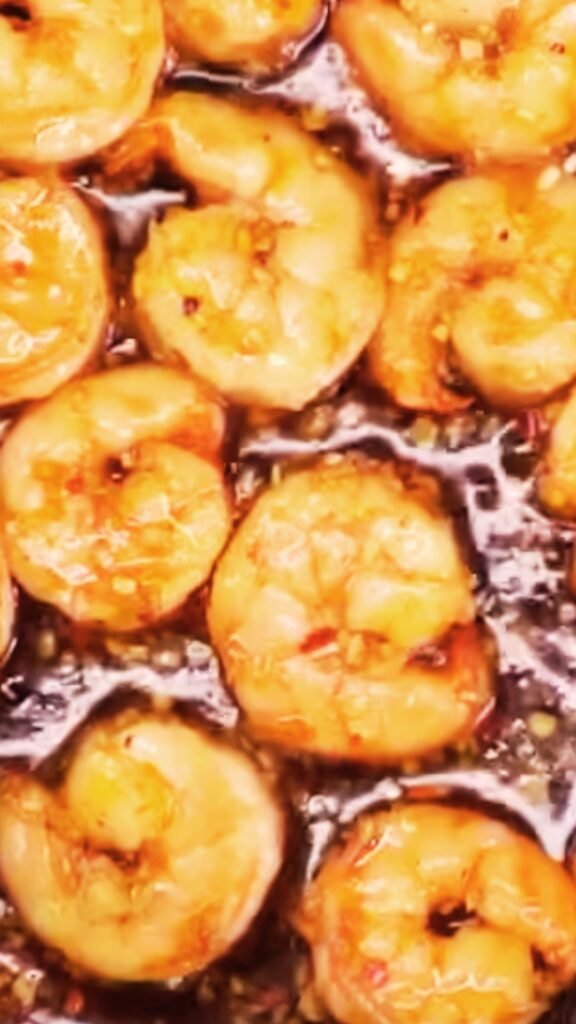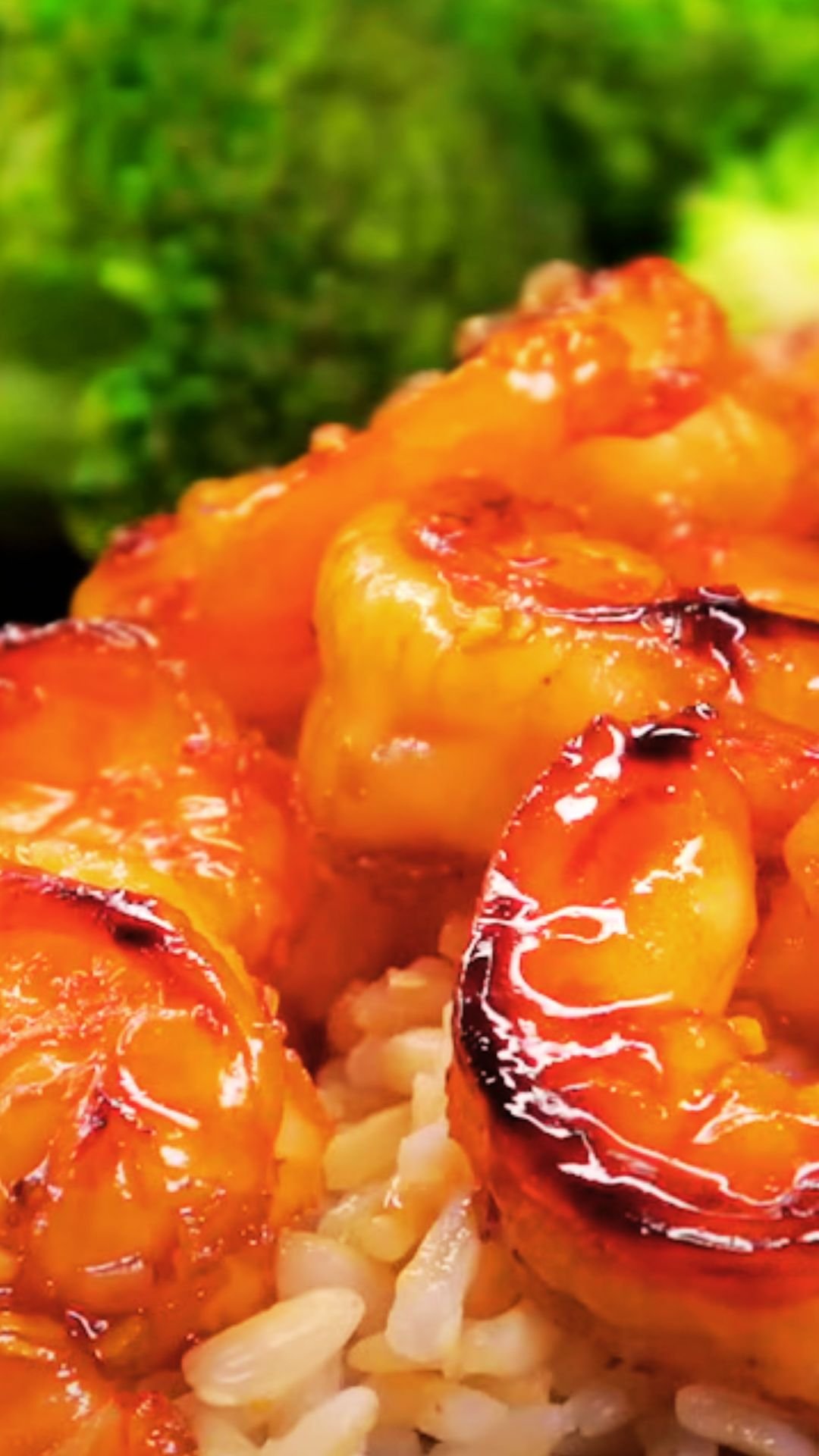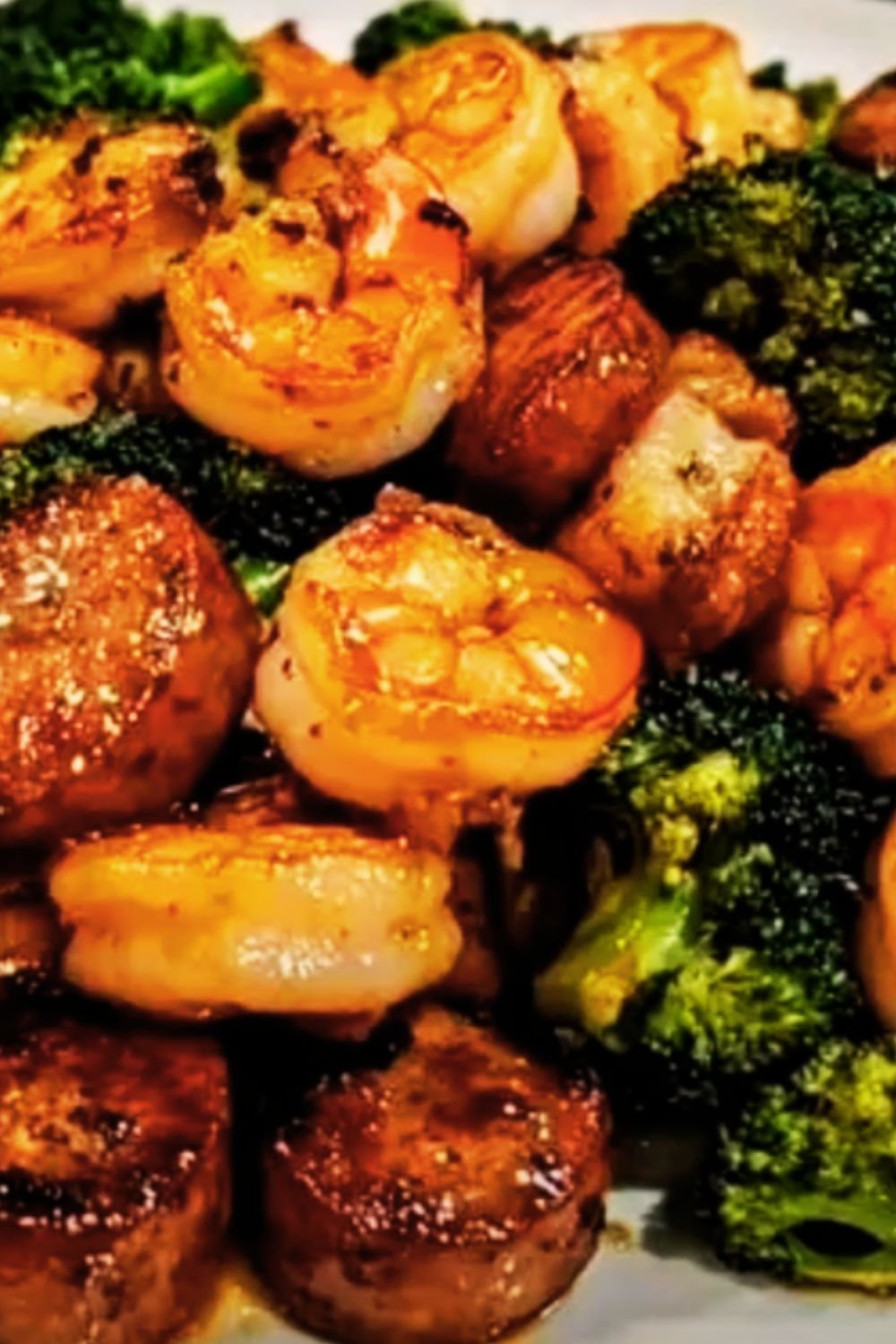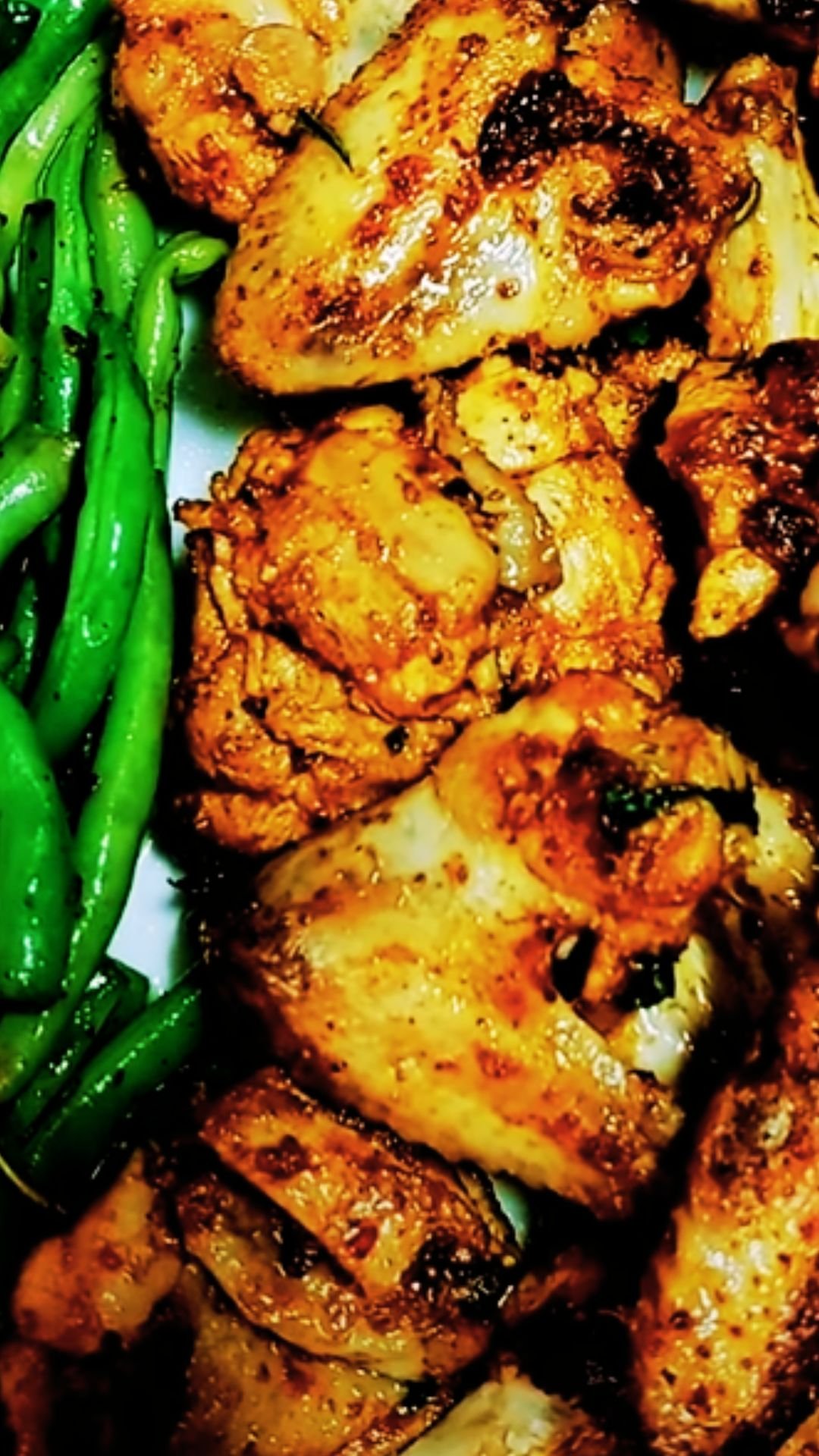When I first discovered the magic of combining tender steak with succulent shrimp in a single noodle dish, my entire perspective on weeknight dinners changed forever. This isn’t just another stir-fry recipe – it’s a culinary adventure that brings together the best of land and sea in one spectacular bowl. The beauty of steak and shrimp stir-fried noodles lies in its perfect balance of textures, flavors, and colors that create a restaurant-quality meal right in your own kitchen.
I’ve spent countless hours perfecting this recipe, testing different cuts of meat, experimenting with various noodle types, and finding the ideal sauce combinations. What I’ve learned is that the secret to exceptional steak and shrimp noodles isn’t just in the ingredients – it’s in the technique, timing, and understanding how each component works together harmoniously.
This dish represents the perfect fusion of Asian-inspired cooking techniques with Western protein preferences. The high-heat stir-frying method ensures that both the steak and shrimp maintain their distinct textures while absorbing the complex flavors of the sauce. The result is a dish that’s both familiar and exotic, comforting yet exciting.
Understanding the Key Components
Protein Selection and Preparation
Steak Choice: The foundation of this dish starts with selecting the right cut of beef. I’ve experimented with numerous cuts over the years, and my top recommendations include:
- Ribeye: Offers exceptional marbling and flavor
- Sirloin: Provides excellent value with good tenderness
- Flank Steak: Perfect for slicing thin and quick cooking
- Tenderloin: Ultimate tenderness but higher cost
Shrimp Selection: Fresh or frozen shrimp both work wonderfully, but I prefer medium to large sizes (21-25 count per pound) for the best texture and visual appeal.
Noodle Varieties
The noodle choice significantly impacts the final dish. Here are my preferred options:
- Fresh Lo Mein Noodles: Soft texture, excellent sauce absorption
- Dried Egg Noodles: Readily available, good bite retention
- Rice Noodles: Gluten-free option with unique texture
- Udon Noodles: Thick and chewy, creates a heartier dish
Essential Ingredients Breakdown
| Ingredient Category | Primary Options | Flavor Profile | Cooking Notes |
|---|---|---|---|
| Protein – Steak | Ribeye, Sirloin, Flank | Rich, meaty, umami | Slice against grain, 1/4 inch thick |
| Protein – Shrimp | Large, peeled, deveined | Sweet, delicate, oceanic | Quick cook, 2-3 minutes maximum |
| Noodles | Lo mein, egg noodles, rice | Neutral base, sauce carrier | Cook slightly underdone |
| Aromatics | Garlic, ginger, scallions | Pungent, fresh, aromatic | Mince finely, cook briefly |
| Vegetables | Bell peppers, snap peas, carrots | Sweet, crunchy, colorful | Cut uniformly, maintain crispness |
| Sauce Base | Soy sauce, oyster sauce, sesame oil | Salty, sweet, nutty | Balance is crucial |
My Signature Sauce Formula
After years of experimentation, I’ve developed what I consider the perfect sauce ratio for steak and shrimp noodles:
| Sauce Component | Amount | Purpose | Substitution Options |
|---|---|---|---|
| Low-sodium soy sauce | 1/4 cup | Primary saltiness | Tamari, coconut aminos |
| Oyster sauce | 3 tablespoons | Umami depth | Mushroom sauce, hoisin |
| Sesame oil | 2 teaspoons | Nutty aroma | Toasted sesame oil |
| Rice wine vinegar | 1 tablespoon | Brightness | White wine vinegar |
| Brown sugar | 1 teaspoon | Balance sweetness | Honey, maple syrup |
| Cornstarch | 1 teaspoon | Thickening agent | Arrowroot, potato starch |
| Chili garlic sauce | 1/2 teaspoon | Heat level | Sriracha, red pepper flakes |
Step-by-Step Cooking Method
Preparation Phase (15 minutes)
Meat Preparation: I always start by slicing my steak against the grain into thin strips, approximately 1/4 inch thick. This ensures tenderness and quick cooking. For the shrimp, I remove shells and devein completely, then pat dry with paper towels.
Vegetable Prep: I cut all vegetables into uniform sizes – bell peppers in strips, snap peas trimmed, carrots julienned. Consistency in size ensures even cooking.
Sauce Mixing: In a small bowl, I whisk together all sauce ingredients until smooth. The cornstarch should be completely dissolved to prevent lumps.
The Stir-Frying Process
Stage 1 – Noodle Cooking: I cook the noodles according to package directions but reduce the time by 1-2 minutes since they’ll finish cooking in the wok. After draining, I toss them with a small amount of oil to prevent sticking.
Stage 2 – Protein Cooking: Using a large wok or heavy-bottomed pan over high heat, I add oil and wait until it shimmers. The steak goes in first, spreading it in a single layer without moving for 2-3 minutes to develop a good sear. Then I add the shrimp, cooking for another 2-3 minutes until both proteins are nearly done.
Stage 3 – Vegetable Integration: I push the proteins to one side of the wok and add vegetables to the empty space. This technique, called “wok hei,” allows each component to maintain its distinct characteristics while cooking together.
Stage 4 – Final Assembly: The cooked noodles and prepared sauce go in last, and I toss everything together for 2-3 minutes until the sauce coats everything evenly and the noodles are heated through.
Nutritional Analysis and Benefits
| Nutritional Component | Per Serving (1 cup) | Daily Value % | Health Benefits |
|---|---|---|---|
| Calories | 485 | 24% | Balanced energy source |
| Protein | 32g | 64% | Muscle building, satiety |
| Carbohydrates | 45g | 15% | Energy, fiber |
| Fat | 18g | 28% | Essential fatty acids |
| Iron | 4.2mg | 23% | Oxygen transport |
| Zinc | 5.1mg | 46% | Immune function |
| Vitamin B12 | 2.8mcg | 117% | Neurological health |
| Selenium | 28mcg | 51% | Antioxidant properties |
This dish provides an excellent balance of macronutrients while delivering substantial amounts of essential vitamins and minerals. The combination of lean protein from both steak and shrimp makes it particularly beneficial for muscle maintenance and growth.
Flavor Variations and Customizations
Regional Inspirations
Thai-Style Variation: I replace the oyster sauce with fish sauce and add Thai basil, lime juice, and crushed peanuts for an authentic Southeast Asian twist.
Korean-Inspired Version: Gochujang replaces the chili garlic sauce, and I add kimchi and sesame seeds for a fermented flavor profile.
Japanese Fusion: Using mirin instead of rice wine vinegar and adding shiitake mushrooms creates a more delicate, umami-rich dish.
Dietary Adaptations
Gluten-Free Option: Rice noodles with tamari sauce creates a completely gluten-free version without sacrificing flavor.
Low-Carb Alternative: Shirataki noodles or spiralized vegetables replace traditional noodles for those watching carbohydrate intake.
Dairy-Free: This recipe is naturally dairy-free, making it suitable for lactose-intolerant individuals.
Cooking Equipment and Tools
| Equipment | Importance Level | Purpose | Alternative Options |
|---|---|---|---|
| Large Wok | Essential | High-heat cooking, tossing | Large skillet, cast iron pan |
| Sharp Knife | Essential | Precise cutting | Santoku, chef’s knife |
| Cutting Board | Essential | Safe preparation | Bamboo, plastic boards |
| Large Pot | Important | Noodle cooking | Dutch oven, stockpot |
| Colander | Important | Noodle draining | Fine mesh strainer |
| Small Bowls | Helpful | Ingredient organization | Ramekins, small plates |
| Tongs | Helpful | Easy tossing | Large spoon, spatula |
Storage and Reheating Guidelines
Refrigerator Storage: I store leftover steak and shrimp noodles in airtight containers for up to 3 days. The key is allowing the dish to cool completely before refrigerating to prevent condensation.
Freezer Storage: While possible, I don’t recommend freezing this dish as the shrimp texture becomes rubbery and the noodles can become mushy upon thawing.
Reheating Methods: My preferred reheating method is in a wok or large skillet over medium heat with a splash of water or broth to prevent drying out. Microwave reheating works but may result in uneven heating.

Common Mistakes and Solutions
Overcooking Proteins
The most frequent error I see is overcooking either the steak or shrimp. Both proteins cook quickly at high heat, and continuing to cook them during the final tossing phase can result in tough, rubbery texture.
Solution: Remove proteins from heat when they’re 80% done, as they’ll finish cooking during the final assembly.
Soggy Noodles
Overcooked noodles that become mushy in the final dish are another common issue.
Solution: Undercook noodles by 1-2 minutes during the initial boiling phase, and always drain thoroughly.
Unbalanced Sauce
Too salty, too sweet, or too thin sauce can ruin an otherwise perfect dish.
Solution: Taste and adjust the sauce before adding it to the wok, and remember that soy sauce and oyster sauce both contain significant sodium.
Serving Suggestions and Pairings
Traditional Accompaniments
I love serving this dish with:
- Steamed jasmine rice for those who want extra carbohydrates
- Asian cucumber salad for refreshing contrast
- Pot stickers as an appetizer
- Hot and sour soup for a complete meal experience
Garnish Options
Fresh Herbs: Cilantro, Thai basil, or scallions add brightness and color Textural Elements: Crushed peanuts, sesame seeds, or crispy fried onions Heat Elements: Sliced chilies, chili oil, or hot sauce on the side
Seasonal Adaptations
Spring Version
I incorporate fresh asparagus, snap peas, and baby corn for a lighter, vegetable-forward approach.
Summer Variation
Bell peppers, zucchini, and fresh herbs take center stage, with a lighter sauce to complement the season.
Fall Adaptation
Mushrooms, cabbage, and heartier vegetables create a more substantial, warming dish.
Winter Comfort
Root vegetables and a slightly thicker, more robust sauce provide extra warmth and satisfaction.
Professional Tips for Success
Temperature Control
The key to restaurant-quality stir-fry is maintaining high heat throughout the cooking process. I preheat my wok until it’s smoking hot before adding oil, and I never reduce the heat during cooking.
Ingredient Timing
Everything happens quickly in stir-frying, so having all ingredients prepped and ready is crucial. I arrange everything in the order it will be added to the wok.
Sauce Integration
I always move the sauce bowl around the edges of the wok rather than dumping it in the center. This prevents the sauce from concentrating in one area and ensures even distribution.
Troubleshooting Common Issues
| Problem | Likely Cause | Solution | Prevention |
|---|---|---|---|
| Tough steak | Overcooked or wrong cut | Use tender cuts, don’t overcook | Slice thin, high heat, brief cooking |
| Rubbery shrimp | Overcooked | Cook just until pink | Watch timing, remove when just done |
| Mushy noodles | Overcooked | Undercook initially | Reduce boiling time, test frequently |
| Bland flavor | Insufficient seasoning | Adjust sauce, add salt | Taste sauce before adding |
| Soggy vegetables | Too much liquid | Drain excess, increase heat | Pat vegetables dry, high heat |
| Sticky noodles | No oil separation | Toss with oil after cooking | Always oil noodles after draining |
Recipe Scaling Guidelines
For different serving sizes, I use these multiplication factors:
Single Serving: 0.25x all ingredients Double Recipe: 2x all ingredients, use two woks or cook in batches Party Size (8 servings): 4x ingredients, definitely cook in batches
When scaling up, I never attempt to cook more than 4 servings in a single wok as it reduces the temperature too much and results in steaming rather than stir-frying.
Questions and Answers
Q: Can I use frozen shrimp for this recipe? Absolutely! I actually prefer frozen shrimp in many cases because they’re often fresher than “fresh” shrimp at the grocery store. Just make sure to thaw them completely and pat them dry before cooking.
Q: What’s the best way to slice steak for stir-fry? I always slice against the grain in thin strips, about 1/4 inch thick. Partially freezing the steak for 30 minutes makes slicing much easier and more uniform.
Q: Can I make this dish ahead of time? While it’s best served immediately, you can prep all ingredients ahead of time. The actual cooking should happen just before serving for the best texture and flavor.
Q: What if I don’t have a wok? A large, heavy-bottomed skillet or cast iron pan works well as a substitute. The key is having enough surface area and good heat retention.
Q: How do I prevent the noodles from sticking together? After cooking and draining, I toss the noodles with a small amount of oil. This creates a barrier that prevents sticking while they wait to be added to the stir-fry.
Q: Can I add other vegetables to this recipe? Definitely! I love experimenting with different vegetables. Just remember to add them based on their cooking time – harder vegetables like carrots go in first, while delicate ones like spinach go in last.
Q: What’s the secret to restaurant-style “wok hei” flavor? High heat is absolutely crucial. I heat my wok until it’s smoking hot, and I never reduce the temperature during cooking. This creates that characteristic smoky flavor you get in professional kitchens.
Q: How do I know when the shrimp are properly cooked? Shrimp are done when they turn pink and curl into a C-shape. Overcooked shrimp curl into a tight O-shape and become rubbery, so watch them carefully.
Q: Can I use different types of noodles? Yes! I’ve successfully used egg noodles, rice noodles, udon, and even spaghetti in a pinch. Each creates a slightly different texture and eating experience.
Q: How spicy is this dish? With my standard recipe, it has a mild heat level. You can easily adjust by increasing or decreasing the chili garlic sauce, or by adding fresh chilies for more heat.
This steak and shrimp stir-fried noodles recipe has become my go-to for impressive weeknight dinners and special occasions alike. The combination of tender proteins, perfectly cooked noodles, and vibrant vegetables creates a dish that’s both satisfying and sophisticated. With practice, you’ll develop your own rhythm and preferences, making this recipe truly your own. The beauty of stir-frying lies in its adaptability – once you understand the basic technique, you can confidently experiment with different ingredients and flavor combinations to create endless variations of this delicious dish.



